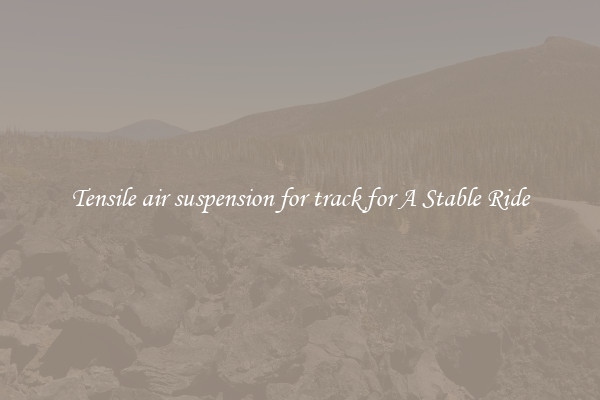Tensile air suspension for track for A Stable Ride
Tensile Air Suspension for Track: A Stable Ride

In the world of motorsports, having a suspension system that provides a stable ride is crucial. Whether it's Formula 1 racing or track events, maintaining control over the vehicle's movements is essential for both safety and performance. One solution that has gained popularity in recent years is the use of tensile air suspension for track applications.
Tensile air suspension is a type of suspension system that utilizes air springs to support the weight of the vehicle. Unlike traditional coil springs, air springs offer greater flexibility and adaptability to changing track conditions. The use of air allows for the adjustment of ride height and spring rate, giving drivers the ability to tailor the suspension for optimal performance.
One of the key benefits of tensile air suspension is its ability to provide a stable ride. The air springs absorb the impact of bumps and imperfections on the track, minimizing the transfer of vibrations to the chassis. This not only enhances driver comfort but also improves handling and traction on the track. By maintaining superior tire contact with the road surface, tensile air suspension helps to maximize grip, reduce body roll, and improve overall stability.
Furthermore, tensile air suspension allows for real-time adjustments. With the use of electronic controls, drivers can fine-tune the suspension settings while driving. This means that they can quickly adapt to changes in track conditions, such as variations in grip levels or the addition of rain. These adjustments can significantly impact the performance of the vehicle, enabling drivers to maintain control and react swiftly to unforeseen circumstances.
Another advantage of tensile air suspension is its weight-saving potential. Traditional suspension systems can be heavy due to the use of steel coil springs and shock absorbers. In contrast, air springs are lightweight and can be designed to accommodate different load capacities. This not only reduces the overall weight of the vehicle but also allows for better weight distribution, which is crucial for achieving optimum handling and cornering ability on the track.
In conclusion, tensile air suspension for track applications offers a stable ride that enhances both safety and performance. Its ability to adapt to changing track conditions and provide real-time adjustments allows drivers to maintain control and react swiftly. The lightweight design of air springs also contributes to better weight distribution and improved handling. As motorsports continue to evolve, tensile air suspension is expected to become increasingly popular, contributing to a more efficient and enjoyable racing experience.

View details

View details

View details

View details








